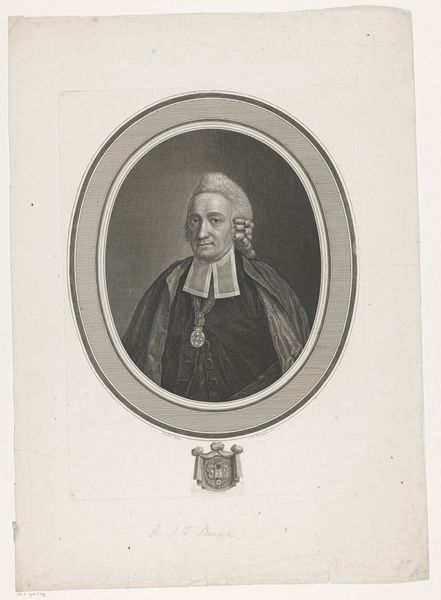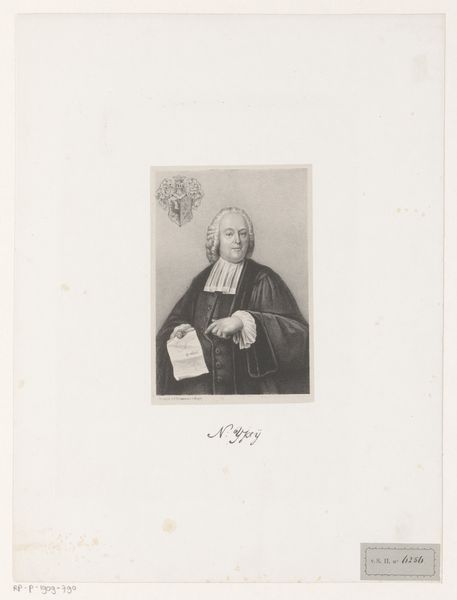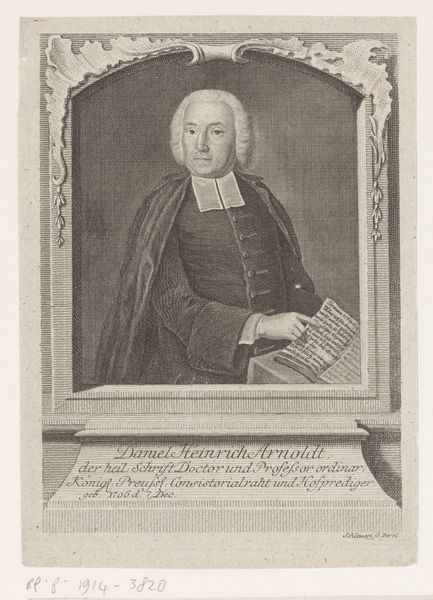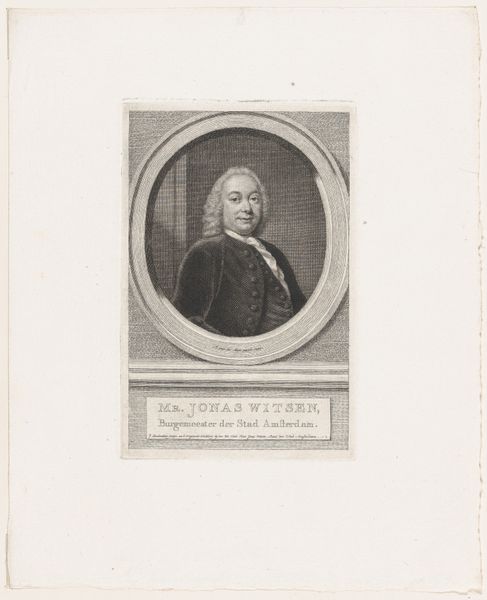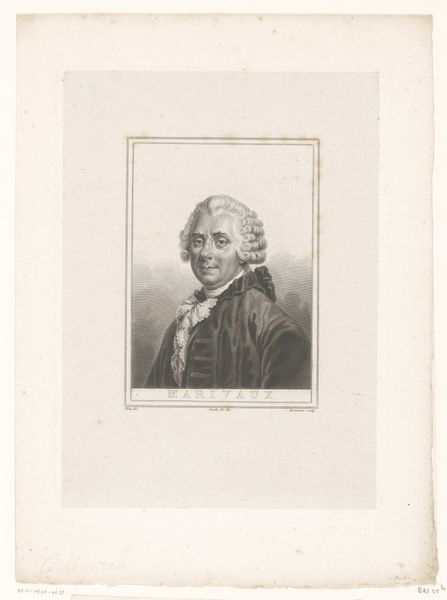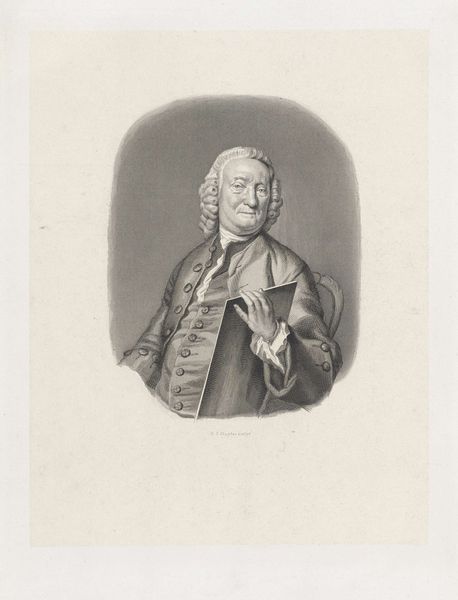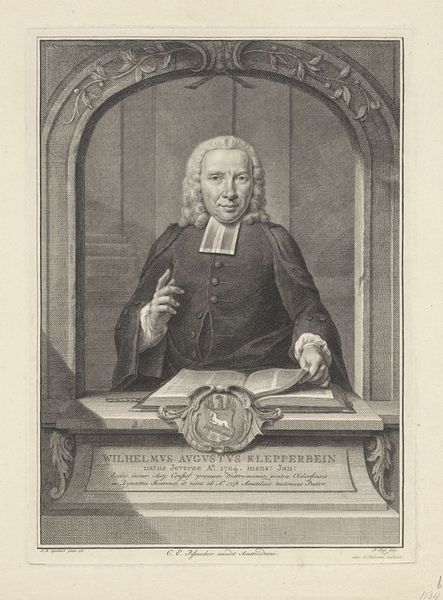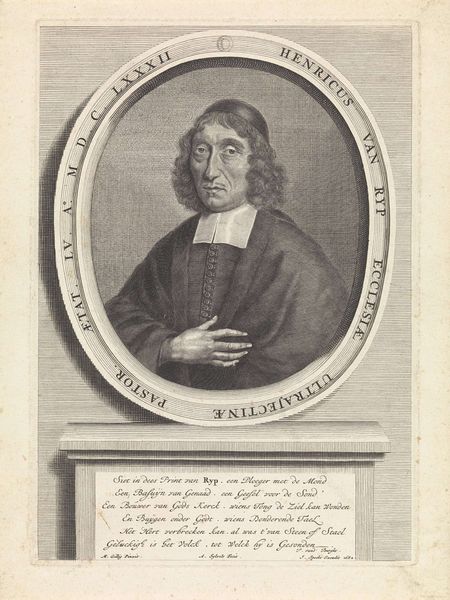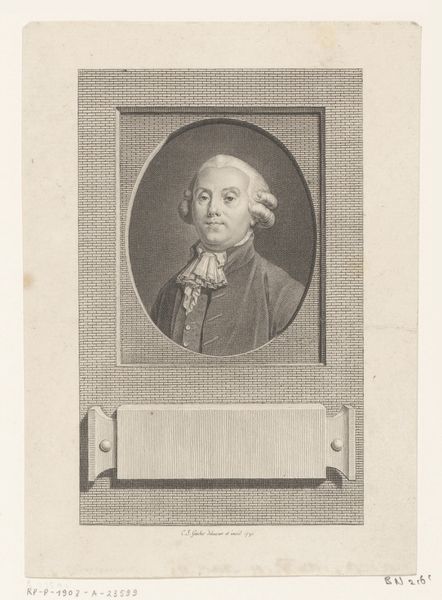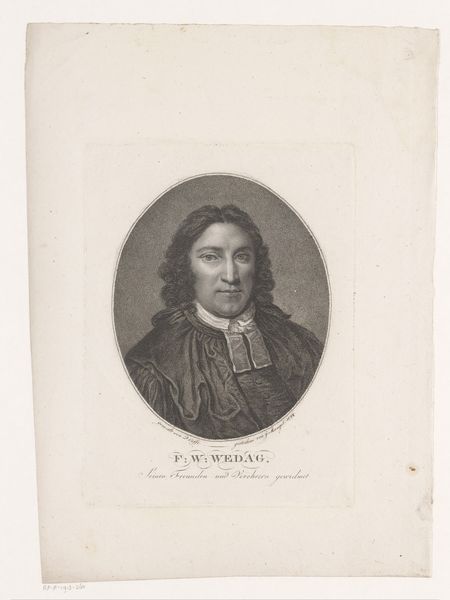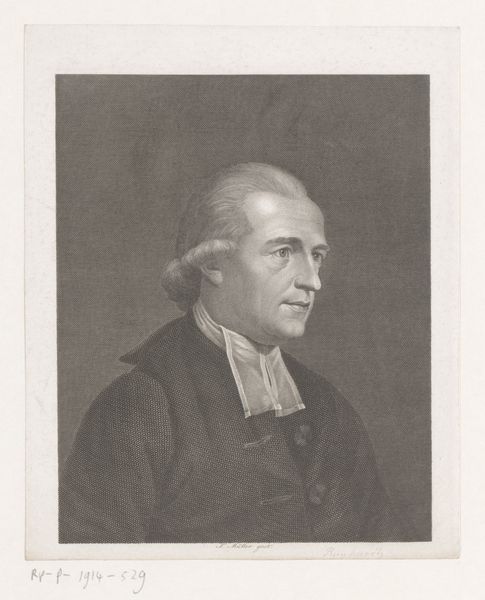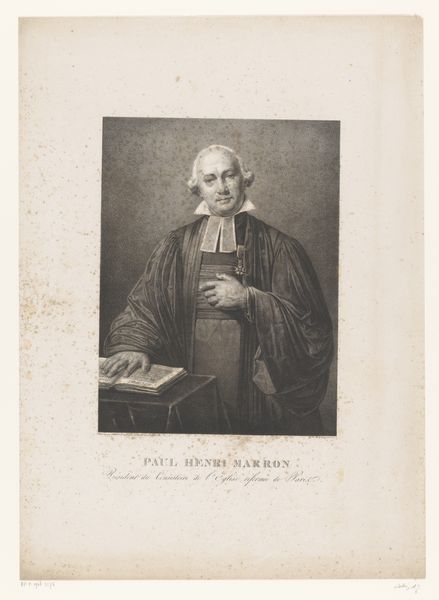
print, engraving
#
portrait
#
neoclacissism
# print
#
old engraving style
#
pencil drawing
#
portrait drawing
#
history-painting
#
academic-art
#
engraving
Dimensions: height 604 mm, width 444 mm
Copyright: Rijks Museum: Open Domain
Curator: Looking at this engraving of Pope Pius VIII, dating roughly from 1825 to 1836, I feel a profound stillness. It’s more than just a portrait; it's almost an echo of power, captured in the delicate lines. Editor: My first impression is all about process. What I find striking about this portrait is how Antoine Maurin, the artist, managed to get so much detail using the print medium of engraving. The line work really sings out here, creating both form and depth. Curator: Absolutely! The engraving elevates what could have been a simple portrait into something rather special. You can feel the artist’s hand at work in the variations of the lines. Look closely and you notice that each stroke adds to the pope's almost otherworldly presence. It’s a whisper of eternity, wouldn't you say? Editor: Definitely, but I am drawn to thinking about this piece through a lens of production. It’s hard to ignore the political and cultural power inherent in this medium during the 19th Century. Here you have access to repeatable, reproducible imagery—the mechanization of image making impacting how the world thought of celebrity and religious power. How else could an artist so meticulously recreate such elaborate ecclesiastical garments so perfectly? Curator: And yet, it’s more than mechanical reproduction; it’s interpretation. Maurin subtly reveals something about Pius VIII’s inner world through these meticulously rendered details. He wasn’t just documenting a man; he was crafting a narrative around authority, faith, perhaps even a touch of human vulnerability peeking through. Or am I reading too much into the shadows around the eyes? Editor: Maybe not. Engraving offered artists opportunities for commentary, of course. But the point remains that these things don't materialize from nothing. We often discuss the artist, but who engraved the plates? Where did the materials come from? What was their workshop like? Curator: Ah, the silent symphony of unseen hands! It’s humbling, isn’t it, to think of the artistry woven into this work beyond just the main figure's? Editor: Precisely. When we shift focus, the image vibrates with deeper meaning and tells stories about both those depicted and those doing the depicting. Curator: So, through careful consideration, an artwork like this reminds us not just of a specific Pope but about how meaning emerges through human creation across time. Editor: A valuable reminder that images are not just mirrors reflecting back at us; but crafted objects created by many with labor and the intention that reflects wider trends in a particular society.
Comments
No comments
Be the first to comment and join the conversation on the ultimate creative platform.
